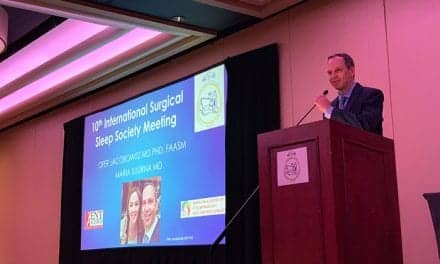In 2016, the federal government took several big steps to create clear rules surrounding commercial drivers and rail workers and obstructive sleep apnea (OSA). Among other forward movement, the notice of intent for rulemaking cleared the Office of Management and Budget, the Federal Motor Carrier Safety Administration (FMCSA) and the Federal Railroad Administration published an Advance Notice of Proposed Rulemaking (ANPRM), and solicited public input on the impacts of screening, evaluating, and treating rail workers and commercial motor vehicle drivers including hosting meetings around the country.
But this month, citing “not enough information available to support moving forward with a rulemaking action,” the rulemaking on sleep apnea has been withdrawn.
According to reginfo.gov:
FMCSA and Federal Railroad Administration (FRA) sought data and information concerning the prevalence of moderate-to-severe obstructive sleep apnea (OSA) among individuals occupying safety sensitive positions in highway and rail transportation, and on its potential consequences for the safety of rail and highway transportation. The Agencies also requested information on potential costs and benefits from regulatory actions that address the safety risks associated with motor carrier and rail transportation workers in safety sensitive positions who have OSA. Upon review of all public comments to the ANPRM, FMCSA has determined there is not enough information available to support moving forward with a rulemaking action and so the rulemaking will be withdrawn.
Where do commercial drivers and pilots stand now? FMCSA gives medical examiners authority to make determinations and decisions based on their medical knowledge, the results of the driver’s physical examination, and the current medical standards of practice.





Given Fmcsa citing not enough information for rulemaking…. it is entirely likely trucking groups opposed to sleep apnea testing will either petition Fmcsa to remove sleep apnea from conditions evaluated by medical examiners.
Another option will be for opponents to just return to Congress as they did in 2014 with public law 113-45 to remove sleep apnea from conditions evaluated by medical examiners.
A bad rule would have been better than the current no rule rules.
Sleep apnea is a major safety issue among both commercial truckers and railroad workers. A substantial number of truck drivers suffer sleep apnea or other health conditions associated with sleep apnea. Severe sleep apnea can create huge risks for the trucker as well as all other drivers around him/her. The U.S. DOT needed to act with a commonsense rule that would consider the evaluation and treatment of commercial drivers suffering unsafe sleep apnea. Instead, the DOT put short-term trucking industry profits over the long-term safety of all other drivers. That’s wrong. Here is my August 2017 article on the issue: https://www.alabamainjurylawyer-blog.com/2017/08/14/sleep-apnea-government-chooses-trucking-industry-safety/